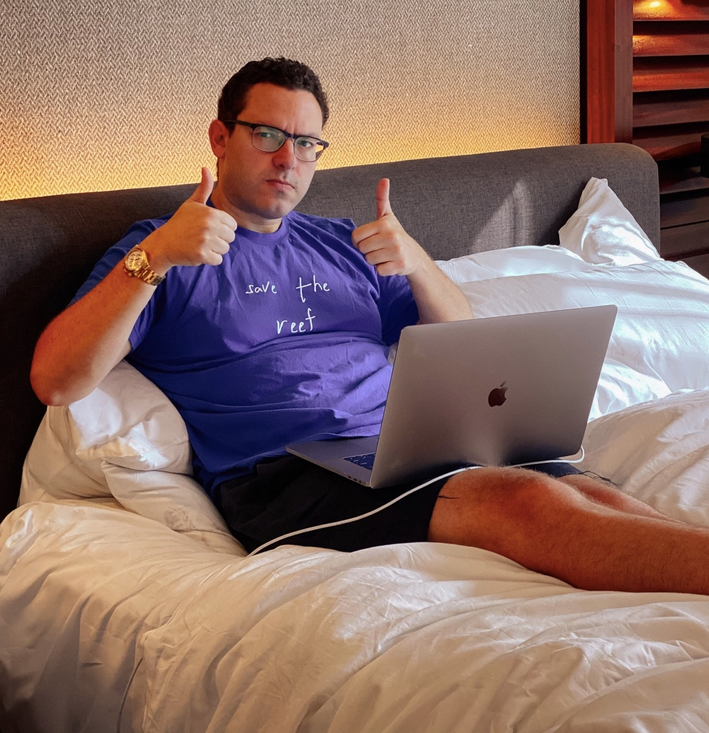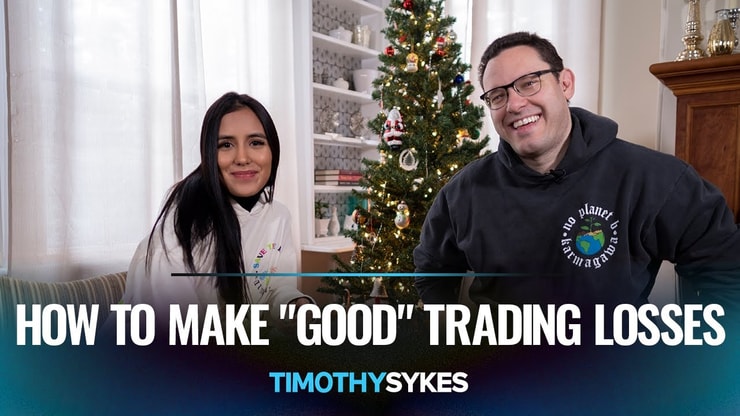If you’ve heard about the tortoise and hare, you already know why newbies should be trading small to start.
For many traders, it doesn’t make a ton of sense. I get it.
You’ve read my guide to penny stocks. And maybe you’ve watched many of the 1,400-plus no-cost videos on my YouTube channel.
Maybe you’re even in the Trading Challenge with me and my top students. You’re working hard, showing up every day. You see what’s possible and you’re raring to go.
And then I tell you not to aim high? What’s that about?
Am I just trying to protect myself if you fail, like most traders do?
No!
I’m telling you what I always say to my Trading Challenge students. Those who heed my words work to turn their slow starts into exponential gains.*
Check this out, and don’t just skip to the end:
Daily inspiration by @Jackaroo_Trades one of my top https://t.co/occ8wKmlgm students turned masters: 20 months of studying & making ZERO, 27 months to make $1 million, 1 month for my 2nd million, 3 weeks for my 3rd million, 10 Days for my 4th million, 2 Days for my 5th million. pic.twitter.com/luM0WfhZdB
— Timothy Sykes (@timothysykes) February 12, 2021
Of course you want to have the kind of success like Jack Kellogg has. Look at that curve go ‘to the moon’ as they love to say on Reddit.*
But that’s not why I’m showing you Jack’s profit chart. I want you to look at the first 20 months instead.
Then I want you to ask yourself … Are your trading goals worth waiting for?
(*Note that these results aren’t typical. These top traders and I put in the time and dedication and have exceptional skills and knowledge. Most traders lose money. Always remember trading is risky … never risk more than you can afford.)
Table of Contents
Trading Small: Learn to Love the Process
You know the ‘wax on, wax off’ part in the “Karate Kid?”
That’s kind of what we’re doing here. It’s important to have goals. If you don’t want to improve your trading results, what the heck are you doing here anyway?
Don’t skip steps.
Take a look at this awesome trade my newest millionaire student Mariana made.* It’s great because it shows her work…
It shows her development on the same kind of setup she was practicing as a small account trader.
This is a great tweet from my top female https://t.co/occ8wKmlgm student @mmhincapiee who made $200,000+ LAST WEEK/is now over $700,000+ in profits despite being in her early 20s, to those who rip on my students taking small gains, it's GOOD to start small then scale up later on! https://t.co/y2Ld7tHDZc
— Timothy Sykes (@timothysykes) February 15, 2021
Her success is exceptional, but it isn’t random. That’s what I want to teach you.
She came to work. Every. Single. Day. The profits she made were beside the point. She judged herself on whether her setups worked. Mariana breaks it down in this video:
Her first three months were just studying and trading small. She watched all of my DVDs — which come included with the Trading Challenge.
She knew that her goals were bigger than winning the next trade. And she knew the way to get there was through small gains.
Now she’s reached $1 million and she’s barely in her 20s.*
Aim Small, Miss Small
This is a rule I live and trade by.
I want you to understand that trading small can actually be an advantage.
If you play by Wall Street rules, you’re looking for 8%–10% a year on the millions or billions of dollars under your control. You want to beat the S&P 500, and take home that extra 1%–2% in management fees.
Wall Street traders don’t trade the high volatility penny stocks that I teach my students to trade. Scared of these stocks? They’re the basis of my NO-COST “Volatility Survival Guide” that I made to help traders understand how to navigate them.
Wall Street traders already have plenty of cash in their accounts. Their mission is to make a little bit more.
But that doesn’t work if you have a small account. If you start with $10,000, 10% a year is $1,000. The next year, it would be $1,100…
With luck and compound interest, maybe you’ll be a millionaire by the time you’re 70.
I teach my Challenge students patience — but not that much patience! So while I want my students going for small gains, I want them to aim for even smaller losses, and…
Cut Losses Quickly!
Risk management is the key to good setups. This is rule #1 — hopefully, you know this already.
But what does this look like when you’re trading small? The same way as when you’re trading at any size.
You’re trading small because you want to fine-tune your process without risking too much money. And if you’re cutting your losses quickly, you’ve already got the most important part of it down.
Go for Singles, Not Home Runs

When I say go for singles, people want to rush up to the plate. What I actually mean is that you should go for singles when you’re ready.
Baseball players don’t start in the major leagues. For every player you see on TV one day, several lifetimes of practice went into getting there. And somehow, people accept this as the price of success in sports.
But even a few months of practice is too much to ask from most traders.
Why?
I think it’s because they’re confused about what trading success looks like.
We’ve all seen Hollywood’s version of trading. It’s basically cowboys in suits. Fun to watch, sure, but it’s not a good trading strategy.
There’s a reason that most movies about trading end badly.
When the media covers traders, they look for boom-or-bust stories. Heck, I even wrote about my own in “An American Hedge Fund.” You can read about it all for no cost.
Spoiler alert: I lost a lot of money before I found the disciplined approach I still follow today.
No one wants to hear about the traders who stick to the setups that they’re best at. They’re boring. That isn’t how you get a lot of Twitter followers. But it is how you can work to become a self-sufficient trader.
My Top Students All Started Small

You know Tim Grittani? Almost 10 years into his trading career, he’s my most successful Trading Challenge student ever.* Now he helps me in the Challenge — assisting newbies, moderating chat, and giving webinars.
He’s made over $13.5 million so far.* That’s more than TWICE what I’ve made in my 20+ years!
But no one paid any attention to Grittani the first eight months of his trading career. That’s the time it took him to get over the PDT.*
He wasn’t swinging for the fences back then. In fact, he didn’t trade at all for his first three months. He just studied.
When he thought he was ready, he went all in … and blew up his account.
He went back to work and saved up $1,500, enough to start again, trading small.
This time he went about it the right way. And he only sized up when he worked the kinks out of his trading strategy.
He worked hard to get above the PDT — $25,000. Now that’s the amount that he sometimes makes in a single trade.*
But Grittani’s story is the norm for the top traders who find consistency.* They take their time trading small before scaling up…
Like the 20 months that Jack Kellogg spent building his knowledge account.
Or how Mark Croock spent almost a year under the PDT. Now he’s made over $2.7 million.*
And seven-figure student Kyle Williams?* Almost two years.
Matt Monaco spent almost three years under the PDT on his way to $1.5 million.*
(*Again, these results aren’t typical. These top traders put in the time and dedication and have exceptional skills and knowledge. Most traders lose money. Always remember trading is risky … never risk more than you can afford.)
Why These Top Traders Are Still Part of the Trading Challenge
So study and trade small for a few months … then it’s all uphill, right?
Not quite. The traders who go through my Challenge and hit big milestones all know something key: your market education never ends. So many aren’t technically students anymore, but they’re still a part of the community.
Some are also inspired to give back to the awesome community of Challenge traders. I’ve hired a few to assist me in my education business.
So many help moderate the chat room and give webinars. We’ve got more than 50 Grittani webinars on there — out of thousands. Grittani’s training material is awesome — and it’s not because he’s perfect. He’s great to learn from because he’s honest.
Just check out this video:
A few minutes in, he talks about the challenges he faced years after becoming a millionaire trader.* From mid-2015 to mid-2016, his profit chart just goes sideways.
He took a string of bad losses. And he took a hard look in the mirror.
It would have been easy for Grittani to blame the market. But instead, he doubled down on his studying. And he sized down on his trades till he got them right. See? Trading small doesn’t just have to be for newbies only.
The Bottom Line on Trading Small
If you listen to some so-called trading gurus, it’s a race to get over the PDT. And then you can get in on all the trades that they post … with no proof, and only big gains.
This is why I’m adamant about transparency in this niche. Yes, you can do it — IF you’re willing to put in the work, time, discipline, and commitment.
That’s something my Challenge students understand. Otherwise, they wouldn’t be in the Trading Challenge. I don’t accept everyone.
If you think you’re prepared to trade small while learning the process and rules before you size up, I’d love to hear from you.
I can’t guarantee success. But I can promise that I’ll share everything I’ve learned in 20+ years of trading to help you prepare. You in?
What do you think about trading small? Where are you in your journey? Let me know in the comments — I love hearing from my readers!






Leave a reply